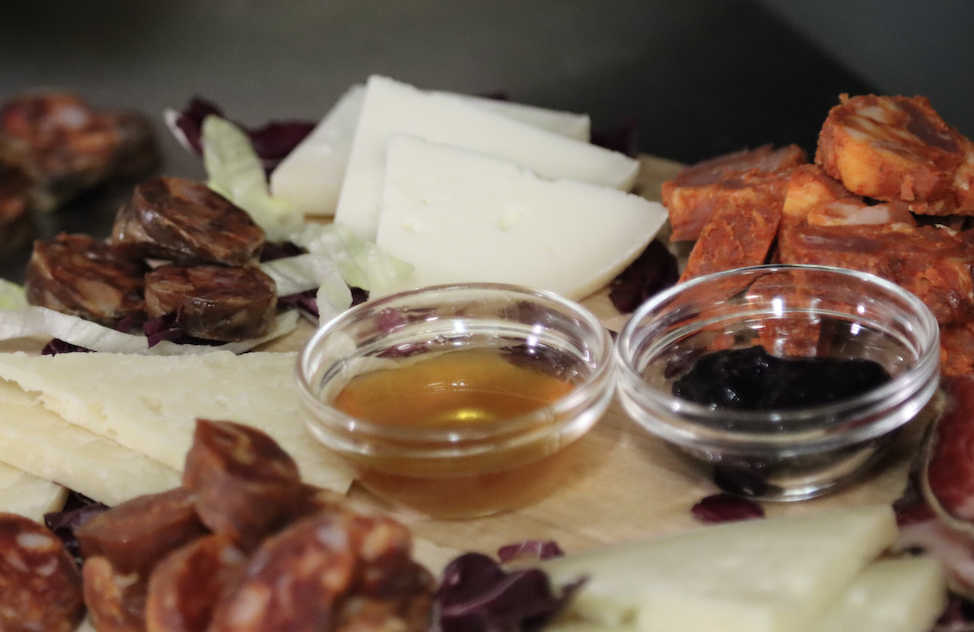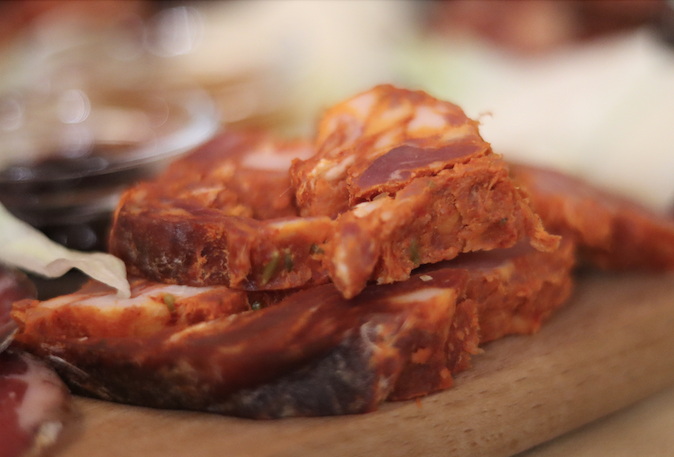Ventricina

The queen of Italian salami
Ventricina, with its history and production methods, is somewhat like Christmas. It symbolizes staying at home and family unity. It also represents authenticity, as it is produced without any preservatives and in an artisanal manner, by hand and without the help of machinery.
Today, it is a Slow Food presidium and is protected by strict production regulations because it is constantly under threat from those who want to imitate it, passing off products that are actually far from the authentic Ventricina.
In recent years, Ventricina has gained recognition by repeatedly winning the title of ‘Best salami in Italy.’ As a result, you can now find spicy salamis in supermarkets falsely labeled as Ventricina (often marketed as ‘ventricina calabrese’). However, true Ventricina is not sold in slices and, especially due to its production characteristics, has a price range of around 35 to 40 euros per kilogram.
From a culinary perspective, Ventricina is a pork salami that stands out from regular salami in three fundamental aspects. The pork meat is lean (maximum 20% fat content), it is not ground but cut into large pieces by hand, and it is seasoned with a mix of spices based on dried sweet pepper, which gives it a distinctive aroma and an orange hue. There is a variation that also includes chili pepper, resulting in two types of Ventricina: sweet and spicy, differing solely in this aspect.

Ventricina is made with meat from Italian pigs, which, due to the allowed breeding methods in Italy, have a significantly higher quality than industrially raised pigs in the rest of Europe. It is produced without any preservatives and aged for three to six months in rather cool environments with a dry and stable climate. Its production area is the mountainous region behind Vasto, where Ventricina is traditionally made with the meat of pigs that each family raises or has raised for sausage production, which takes place around Christmas time (as they say in Vasto: “A Natàle s’accìde lu puòrce”).
Ventricina is stuffed into the pig’s bladder, which is why it has a weight of around 800 grams. Traditionally, it is served in slices about one centimeter thick. Due to its texture and low fat content, the slices tend to crumble, so it is said to be eaten “a tocchi” (by breaking it into pieces). It is typically enjoyed with homemade bread and a young Montepulciano wine or a Montepulciano Cerasuolo vinified as a rosé.

